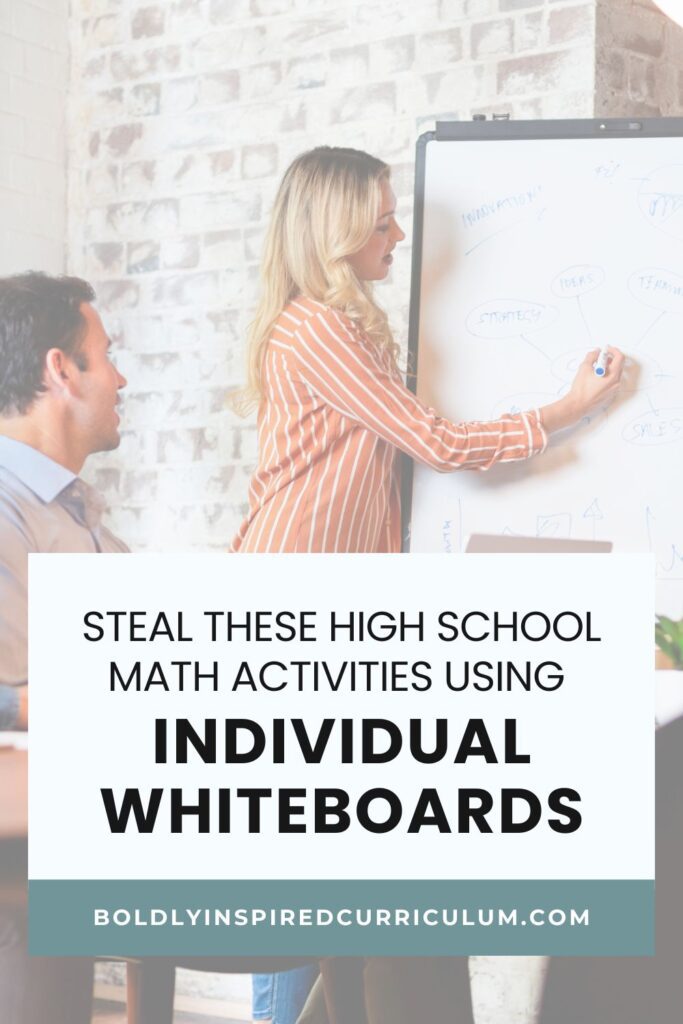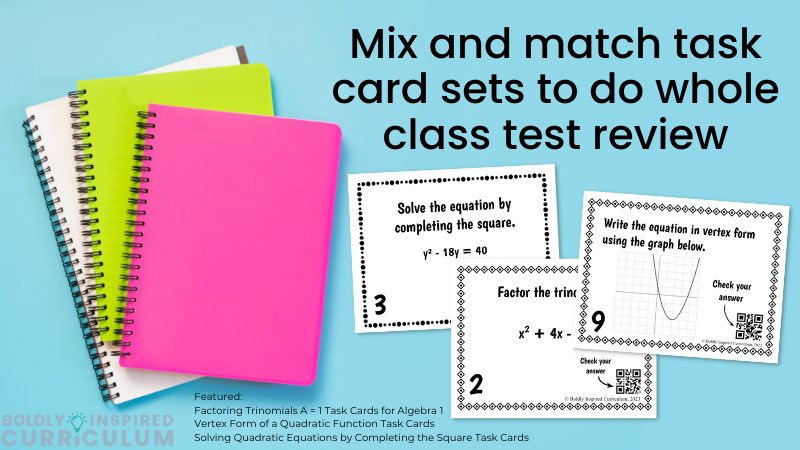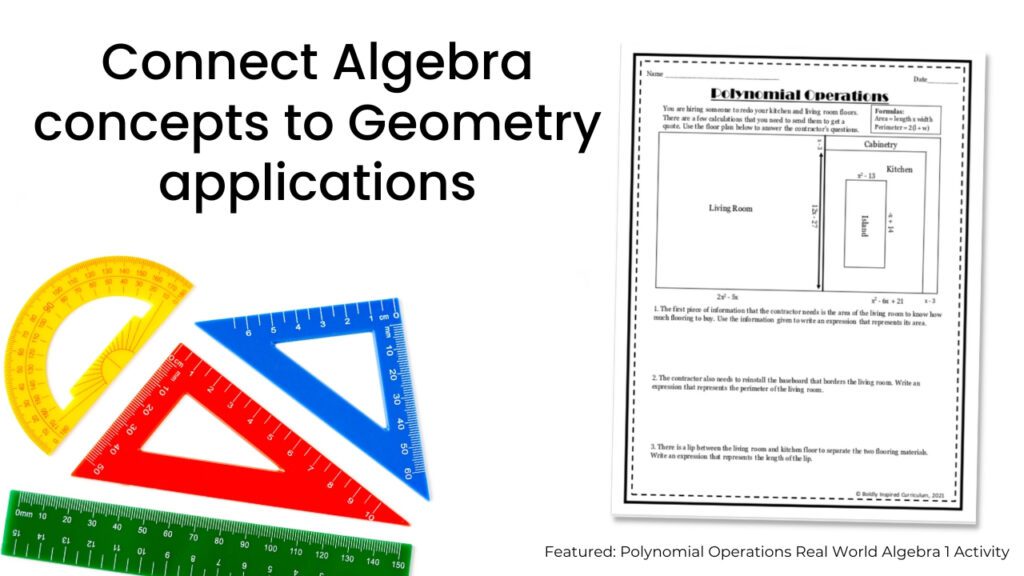Keeping students engaged in math class can be a challenge (especially if you have block scheduling). I’m sharing some low-prep math activities for high school students that you can use to change up your daily routine.
All of these math activities include using individual whiteboards and, honestly, they are an absolute lifesaver in my classroom!
I think that whiteboards are often overlooked by high school teachers, but I have found that they increase student engagement in my classroom tremendously.
There are so many different ways that whiteboards can be used to support student learning in whole group, small group, and individual settings. Keep reading for ideas for how you can use whiteboards in each of these classroom structures.
Table of Contents
ToggleLooking for more math activities for high school? Check out these blog posts ↓

Whole Group math activities
Show your work
Present a problem on the board. This can be from a textbook, task cards, quiz review, or really any kind of practice problems that you want your students to complete.
Have your students solve the problem and when they are done they can lift their whiteboard to show you their work. While they are working, you can float around the room to see their thought process similarly to how you would if you were doing guided practice.
You’ll be able to quickly see who understands and which types of problems your students are struggling with.
This is one of my favorite math activities for high school (especially when my original lesson plan doesn’t work out) when my students need some extra practice before moving on to a new skill.
Draw diagrams
Whiteboards give your students extra room to draw diagrams and pictures while they are taking notes or doing guided practice. I find this especially helpful when teaching word problems or geometry applications.
Sometimes students just need that extra space to show their work or the ease of erasing and trying again.
small Group math activities
Intervention
Pull small groups to pre-teach or review math concepts. You’ll be able to give your students more individualized support and immediate feedback.
This can be during scheduled math centers or independent work time. If you’re lucky enough to have a paraeducator in your classroom to help your other students, pulling small groups will feel even more manageable!
Vertical surfaces
The book Building Thinking Classrooms suggests using vertical, non-permanent spaces for students to collaborate and work through their thought processes. This encourages students to share ideas and participate equally.
The non-permanency of whiteboards creates a safer environment for making mistakes and working through challenging problems. I would definitely recommend looking into Building Thinking Classrooms if you’re looking for new ideas for structuring your classroom and math activities that will get your students thinking!
independent
5. Mobility and flexibility
Students can work around the room when they have individual whiteboards. I have found that when my students are given the option of using a whiteboard they are much more likely to stay on task.
You can take any independent practice time and make it more engaging by simply adding whiteboards!
6. Application Problems
Whiteboards are a great way for students to work through application problems and draw diagrams to represent their thinking. The problem-solving process is full of trial and error. Being able to erase and edit work with a whiteboard easily is a huge time and paper saver for your students.
Whiteboards are an incredibly versatile tool that can be used in various ways to support student learning. If you’re looking for something to add to your math department’s budget for next year, definitely consider putting individual whiteboards on your list!
P.S. Don’t spend your own money on whiteboards! Always ask your admin or department head to order them for you.



